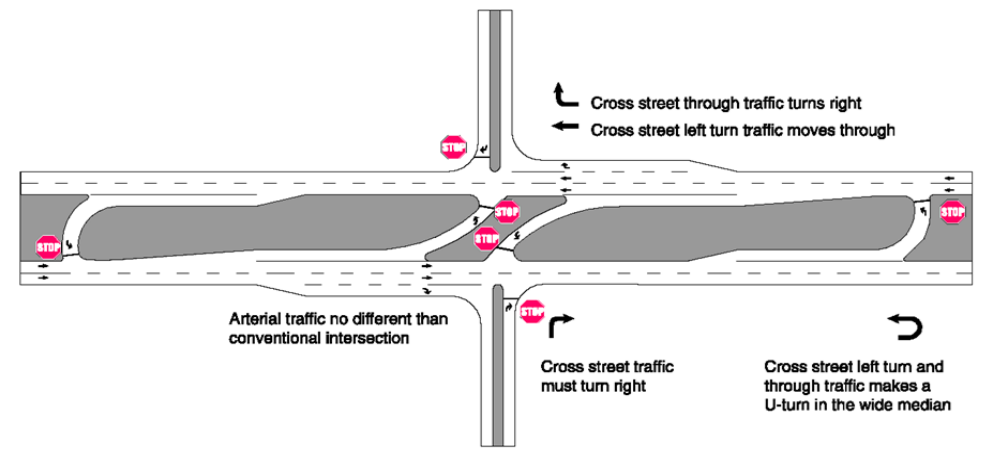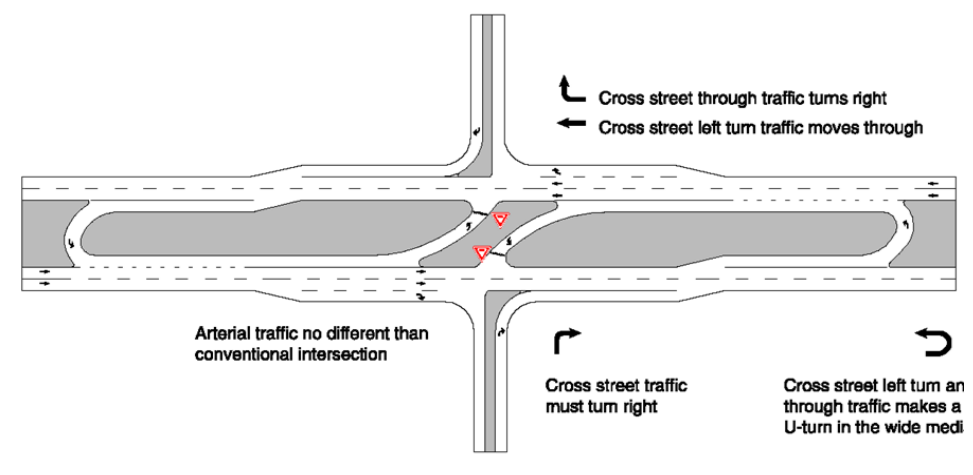14.6.1 Overview
The RCUT, also known as a J-turn or superstreet intersection, is an at-grade intersection with directional medians such that all minor road traffic makes a right-turn followed by a U-turn back to cross a designated location which can be either signalized or unsignalized. The benefits of the RCUT include a significant reduction in intersection conflict points, and a reduction in crash rates and severity. TxDOT has adopted the
as the primary source for RCUT Guidelines. The information contained in this section is considered a companion guide and is intended to document TxDOT’s suggested approach to RCUT design.
See
through
for examples of RCUTs with signals, without signals, and with merges. For RCUT 3-leg approaches, refer to Chapter 7 of the
.

Figure 14-16: Example of RCUT Intersection with Signals
Source: FHWA RCUT Informational Guide

Figure 14-17: Example of RCUT Intersection with Stop-Control
Source: FHWA RCUT Informational Guide

Figure 14-18: Example of RCUT Intersection with Merges
Source: FHWA RCUT Informational Guide
Applications of an RCUT intersection include minor road intersections along rural four lane divided highways, as an alternative to signalization at select intersections to maintain throughput of the main highway, as a corridor treatment along signalized routes to minimize travel times, and as an interim alternative to constructing a grade separated interchange. RCUTs may not be suitable at locations where the minor crossing street has a high volume of left-turn movements, or where there are multiple private drives near the intersection.